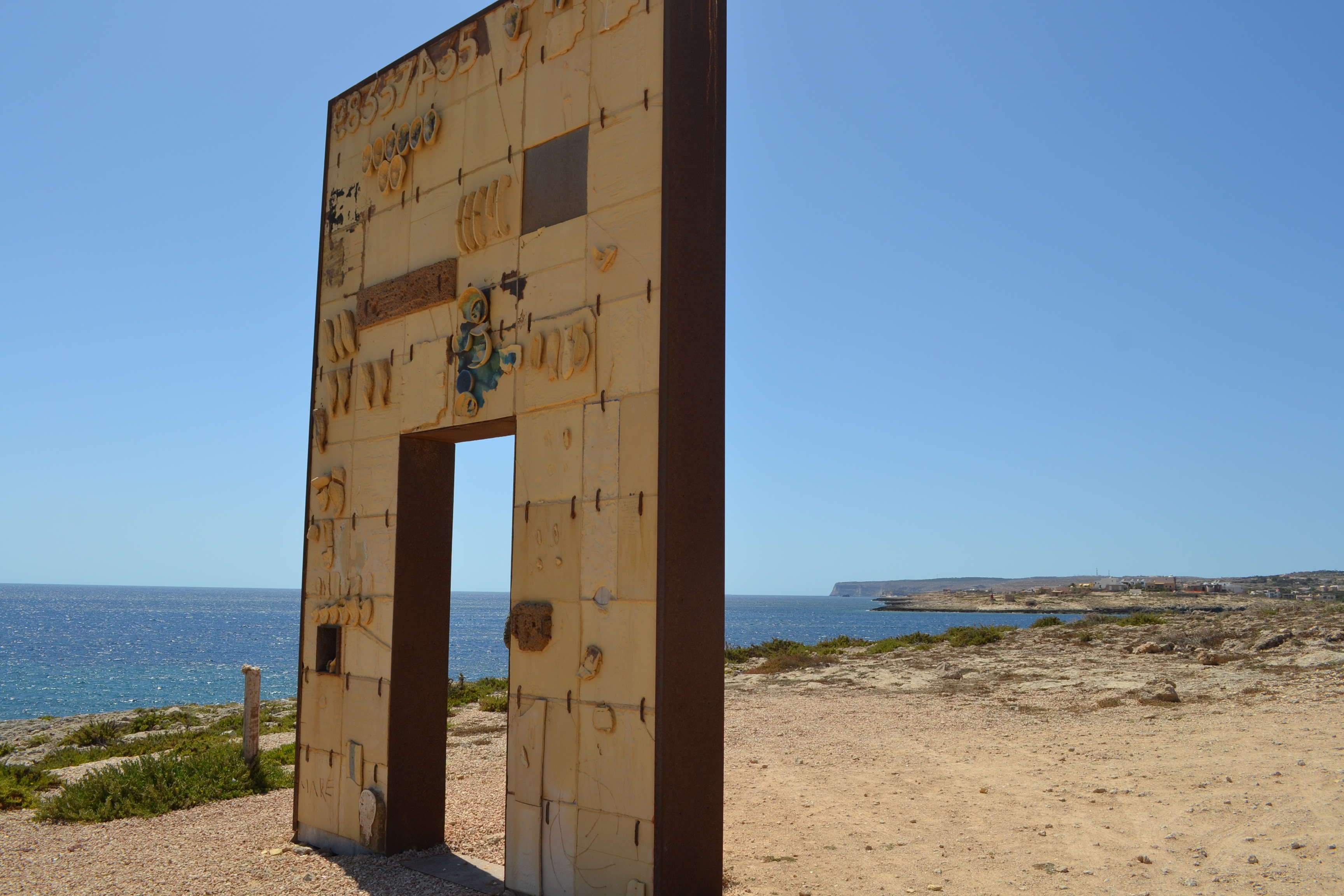
By Nora Moraga-Lewy
Hundreds of dilapidated wooden boats lie beached on the outskirts of Lampedusa’s Porto Nuovo and Porto Veccio, the island’s two main ports. From their peeling Arabic labels, the crafts can be traced back to departure ports in Libya, Algeria, and Morocco. Relics of the mid-twentieth century, these recovered vessels likely each have transported hundreds of illegal migrants on a desperate journey across the Mediterranean to the European border, often in the hope of escaping civil and political strife or a stifling lack of economic opportunity.
Each year, thousands of illegal migrants from the Middle East, sub-Saharan and Northern Africa risk their lives attempting to reach this seemingly insignificant, twenty-square-kilometer jagged rock, an island home to only 4,500 people. Since the province of Agrigento, Sicily, to which the island belongs, is one of the few municipalities in all of Europe equipped with a processing center that accepts undocumented immigrants, Lampedusa is a highly desirable destination for illegal migrants and asylum-seekers. The Guardia Costiera, or Italian Coast Guard, bears the responsibility for collecting the migrant-filled boats once they have crossed into European waters and transporting their passengers to the island’s center. There, the migrants are provided with shelter and a daily stipend until they receive papers to continue the process of temporary naturalization or, more rarely, are sent back to their country of origin.
Guardia Costiera search and rescue patrol boats docked in Lampedusa. (Moraga Lewy/TYG)
Packed far past capacity, however, most of these fragile wooden boats can rarely withstand the shifty Southern Mediterranean’s weather long enough to reach the calm, crystalline waters surrounding Lampedusa. Some capsize entirely, while others barely hold up against the sea’s battering swells. Freak accidents, like fires, sometimes occur on board. The distressed passengers that set out for Lampedusa share an unspoken acknowledgement of the risks associated with this perilous journey. Lacking the ability to radio for help, they understand that their journey, though often of less than 100 kilometers, may be fatal.
Occasionally near entire boatloads of migrants will perish before European officials can even detect them. From October to December of 2013, over four hundred migrants crossing from North Africa drowned in the waters surrounding Lampedusa.
Voyage-related risks are only one concern. Like those crossing the Mexico-United States border, many African and Middle Eastern migrants are trafficked by organized crime rings, which exploit the migrants’ desperation for their own ends. Some migrants are cheated; others may be abused or assaulted along the way if they cannot deliver their payments in full.
Daniela Freggi, the director of the Lampedusa Turtle Group, a small NGO dedicated to marine conservation, first encountered the migration phenomenon under what she called “bizarre circumstances.” In the winter of 2011, the Guardia Costiera rescued over 800 migrants, primarily from East Africa. Since her sea turtle rescue center shares a building with the Guardia Costiera, the facility was transformed into a shelter after the processing center overflowed. Arriving on site, Freggi discovered that much of her operating equipment and several of her holding tanks were lost or damaged in the “chaos and bustle”. Funded only by small donations, the Lampedusa Turtle Group could not work at full capacity for the entire following year.
Yet, Freggi harbors no negative feelings toward the individuals that passed through the makeshift shelter. An entire room of the Lampedusa Turtle Group’s conservation center now stands as a testament to the migrants, containing wedding pictures, baby dolls, and beaded necklaces. A poster reads in Italian: “Pain has no borders – the pain of the migrant, of the turtle, of our volunteers and the fishermen – is united by determination and makes a single world community.”
Photos of East African migrants rescued in 2011 and a poster with the words “pain has no borders” line the walls of the Lampedusa Turtle Group’s conservation center. (Moraga Lewy/TYG)
The local government erected its own memorial several years ago. Known as the “Door of Europe,” it commemorates those who lost their lives in crossing the maritime border to European waters and the risks that they took in the hope of a better life. Yet according to Aldo Croc-Cante of the Guardia Costiera, though most locals know of it, the site seems more visited by tourists. While the residents of Lampedusa understand the migrants aren’t associated with crime, they live their days detached from the situation. Interactions are rare and often solely business-oriented.
Visiting Lampedusa in the fall of 2013, Pope Francis called for action and solidarity, bringing greater attention to the migrants’ situation. His words, though, seemed more likely to be directed toward Europe as a whole; for there seems to be little more that Lampedusa’s residents can do in relation to this issue.
 The “Door of Europe,” a local monument dedicated to those who lost their lives attempting to cross the Mediterranean to Europe. (Moraga Lewy/TYG)
The “Door of Europe,” a local monument dedicated to those who lost their lives attempting to cross the Mediterranean to Europe. (Moraga Lewy/TYG)
Upon receiving temporary naturalization papers or familial status, some migrants remain in Lampedusa to find employment. Others continue on to continental Europe for the same reason. A great number of the migrants are never heard from again. Whether or not these migrants were able to obtain the lives they hoped for in crossing to Europe remains a mystery.
Abdul* came from Eritrea by boat five years ago. Now, he owns a rug stand at a small flea market on the island. Although glad that his life turned out “stable,” it is not as great as he had hoped. When he hears about shipwrecks or drownings, he feels “blessed that [he] wasn’t one of the dead ones” and wishes not to reflect on the others’ luck. “The risks of coming to Europe,”he says,“are higher than you might think.”
Nora Moraga-Lewy ’16 is in Branford College. She can be reached at nora.moragalewy@yale.edu.
(*name changed to respect his privacy)

